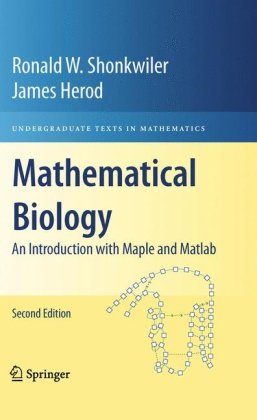

Most ebook files are in PDF format, so you can easily read them using various software such as Foxit Reader or directly on the Google Chrome browser.
Some ebook files are released by publishers in other formats such as .awz, .mobi, .epub, .fb2, etc. You may need to install specific software to read these formats on mobile/PC, such as Calibre.
Please read the tutorial at this link: https://ebookbell.com/faq
We offer FREE conversion to the popular formats you request; however, this may take some time. Therefore, right after payment, please email us, and we will try to provide the service as quickly as possible.
For some exceptional file formats or broken links (if any), please refrain from opening any disputes. Instead, email us first, and we will try to assist within a maximum of 6 hours.
EbookBell Team

0.0
0 reviewsThis text presents mathematical biology as a field with a unity of its own, rather than only the intrusion of one science into another. It updates an earlier successful edition and greatly expands the concept of the "computer biology laboratory," giving students a general perspective of the field before proceeding to more specialized topics. The book focuses on problems of contemporary interest, such as cancer, genetics, and the rapidly growing field of genomics. It includes new chapters on parasites, cancer, and phylogenetics, along with an introduction to online resources for DNA, protein lookups, and popular pattern matching tools such as BLAST. In addition, the emerging field of algebraic statistics is introduced and its power illustrated in the context of phylogenetics.
A unique feature of the book is the integration of a computer algebra system into the flow of ideas in a supporting but unobtrusive role. Syntax for both the Maple and Matlab systems is provided in a tandem format. The use of a computer algebra system gives the students the opportunity to examine "what if" scenarios, allowing them to investigate biological systems in a way never before possible. For students without access to Maple or Matlab, each topic presented is complete. Graphic visualizations are provided for all mathematical results.
Mathematical Biology includes extensive exercises, problems and examples. A year of calculus with linear algebra is required to understand the material presented. The biology presented proceeds from the study of populations down to the molecular level; no previous coursework in biology is necessary. The book is appropriate for undergraduate and graduate students studying mathematics or biology and for scientists and researchers who wish to study the applications of mathematics and computers in the natural sciences.